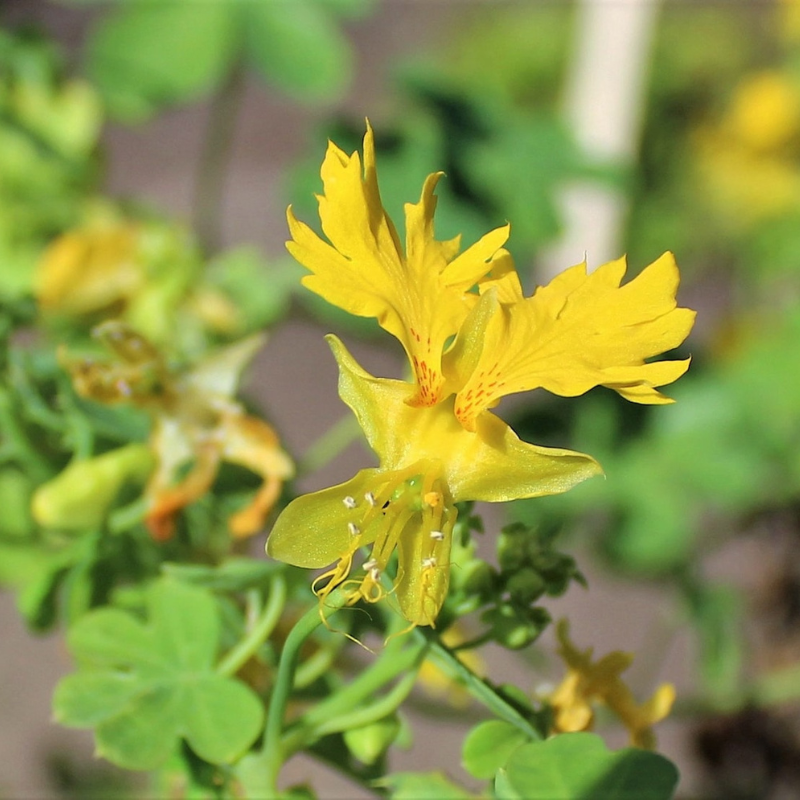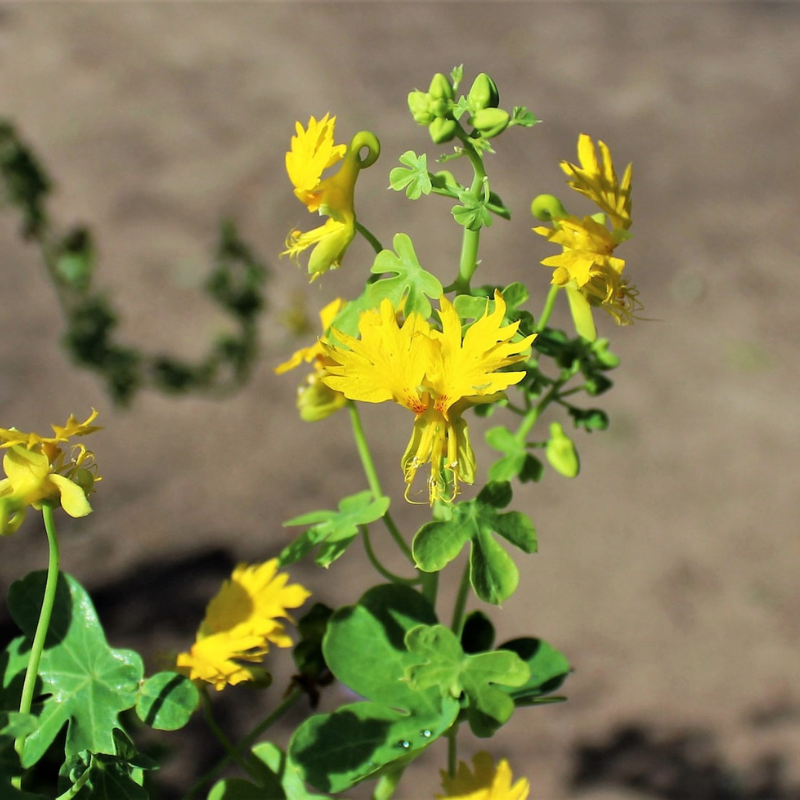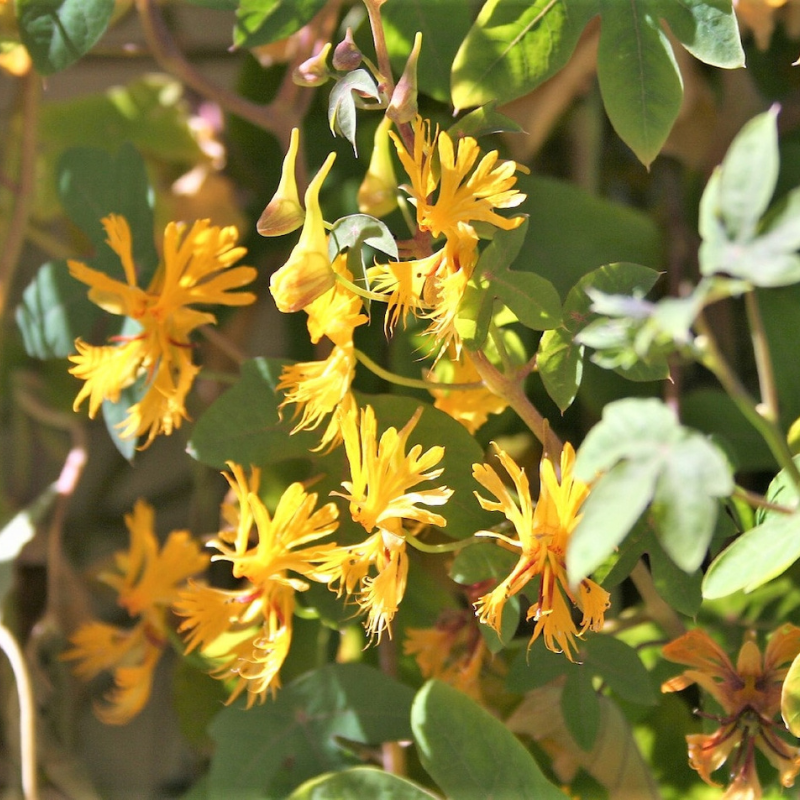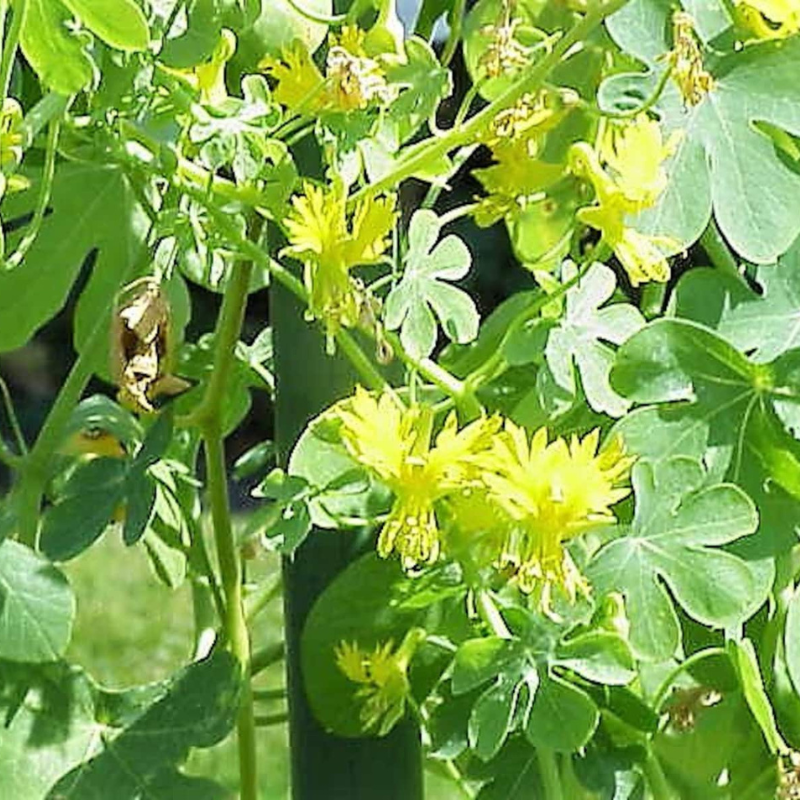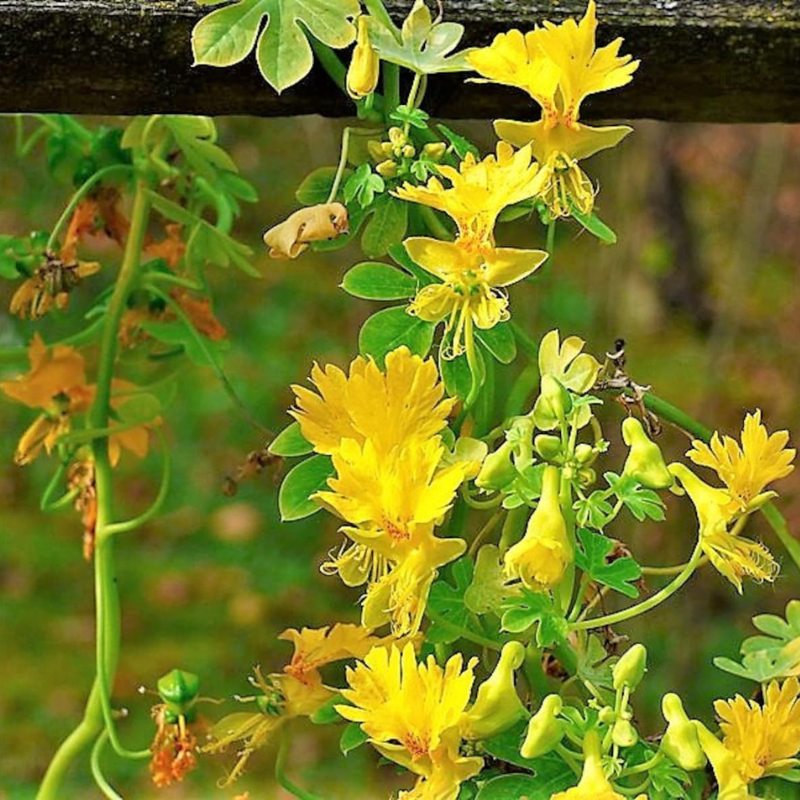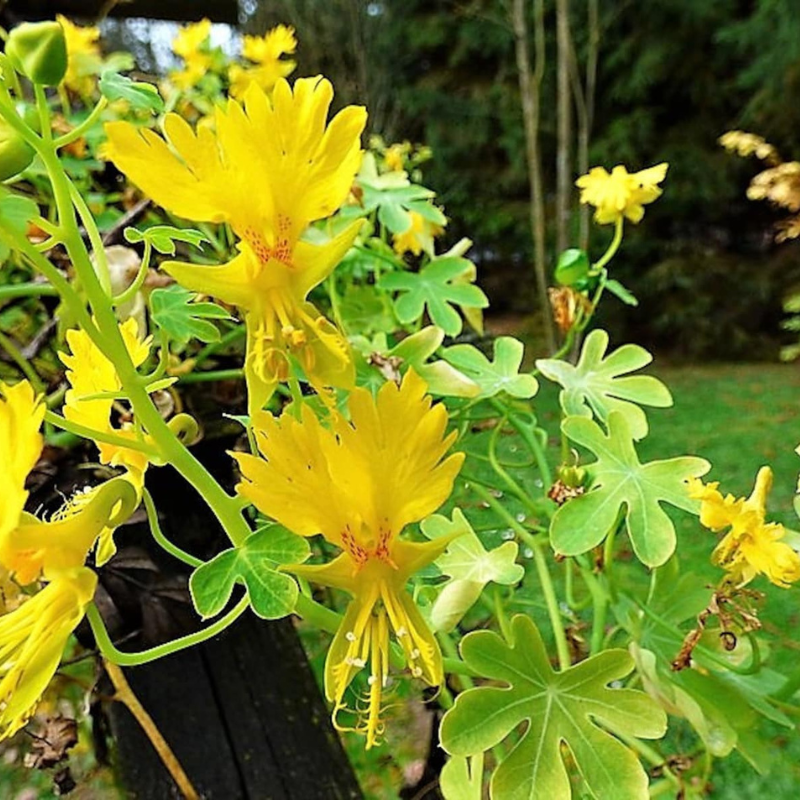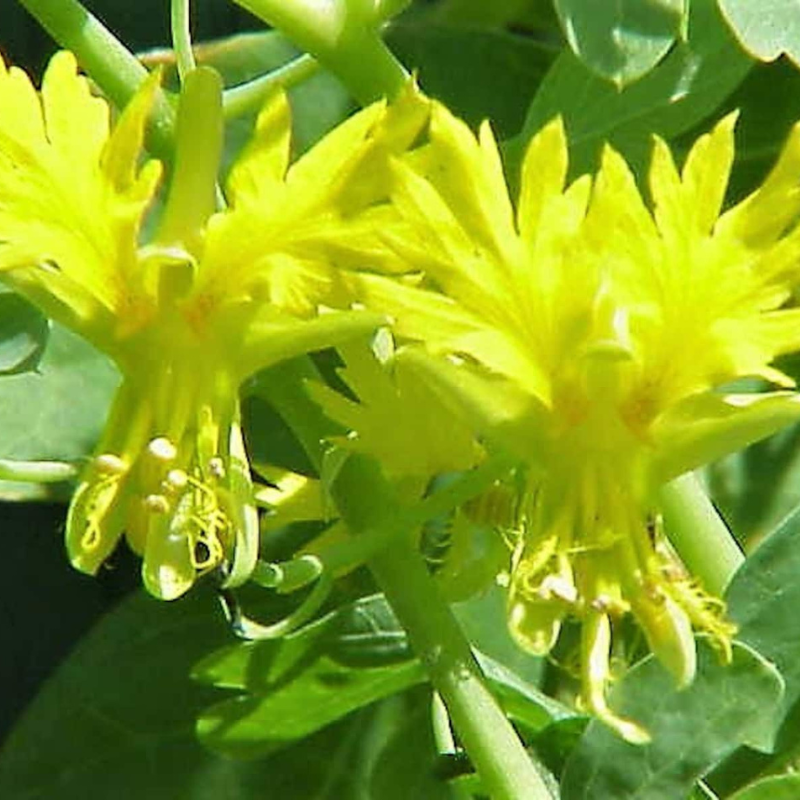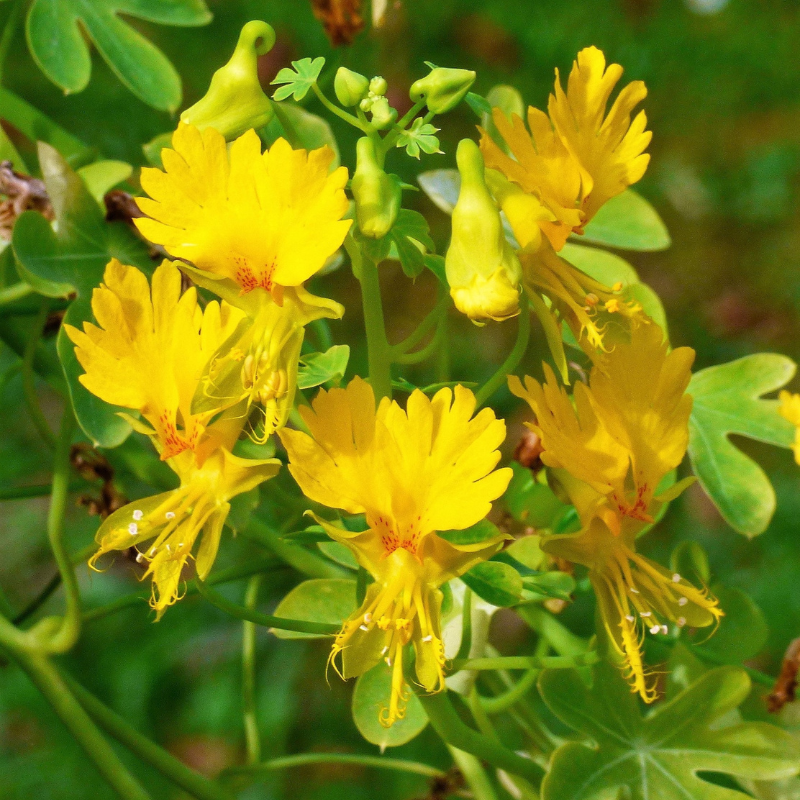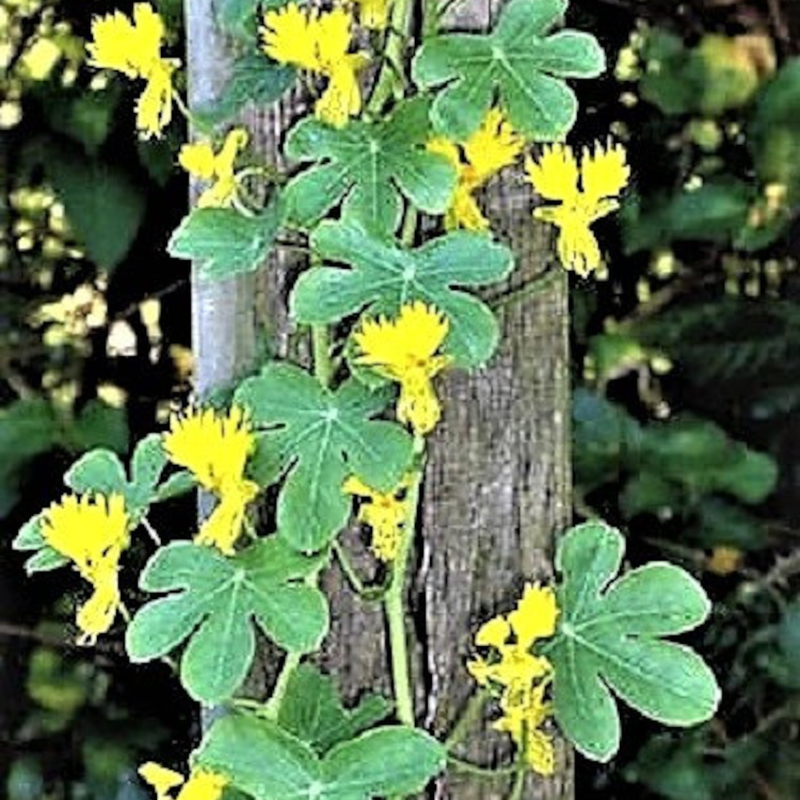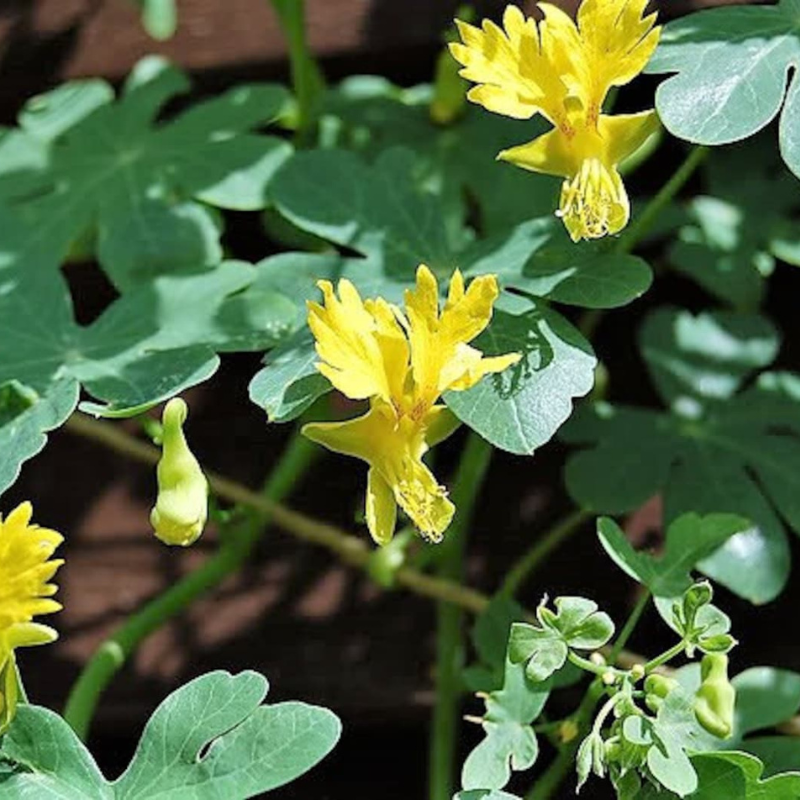- Historical context: The Canary Creeper (Tropaeolum peregrinum) is a member of the Tropaeolaceae family, which also includes the common garden nasturtium. It was first described by Carl Linnaeus in the 18th century.
- Geographical origination: This plant is native to South America, particularly in Peru and Ecuador.
- Relevant cultural significance: The Canary Creeper has been cultivated in European gardens since the 18th century and is valued for its ornamental beauty.
- Time period of discovery: The Canary Creeper was introduced to Europe in the 18th century.
- Original habitat: It thrives in the subtropical and tropical regions of South America.
- Notable historical uses: Primarily used as an ornamental plant in gardens and landscapes due to its attractive yellow flowers and climbing habit.
- Ideal temperature range: The ideal temperature range for growing Canary Creeper is between 60°F to 75°F (15°C to 24°C).
- Soil type: It prefers well-drained, moderately fertile soil. A mix of garden soil and compost works well.
- Sunlight requirements: Full sun to partial shade. It thrives best with at least 6 hours of direct sunlight per day.
- Watering needs: Keep the soil consistently moist but not waterlogged. Water regularly, especially during dry periods.
- Planting season: Plant seeds in the spring after the last frost date.
- Germination time: Seeds typically germinate within 10 to 14 days under optimal conditions.
- Growth cycle duration: The Canary Creeper is an annual plant, completing its life cycle within one growing season.
- Common pests and diseases: Aphids, slugs, and snails can be common pests. Powdery mildew and root rot can occur if conditions are too damp.
- Companion planting advice: Can be planted alongside other climbing plants like sweet peas or morning glories. Avoid planting near plants that require very dry conditions.
- Common challenges and solutions: Overwatering can lead to root rot. Ensure good drainage and avoid waterlogged soil. Aphids can be controlled with insecticidal soap or neem oil.
- Nutritional values: While not commonly consumed, the leaves and flowers are edible and contain vitamin C.
- Health benefits: The plant is not widely known for medicinal uses, but like other nasturtiums, it may have mild antiseptic properties.
- Culinary uses: The flowers and young leaves can be used in salads for a peppery flavor.
- Medicinal uses: Limited medicinal use, primarily for its potential antiseptic properties.
- Other unique advantages: The Canary Creeper is highly valued for its ornamental appeal, with bright yellow, fringed flowers that add a splash of color to gardens and trellises.
